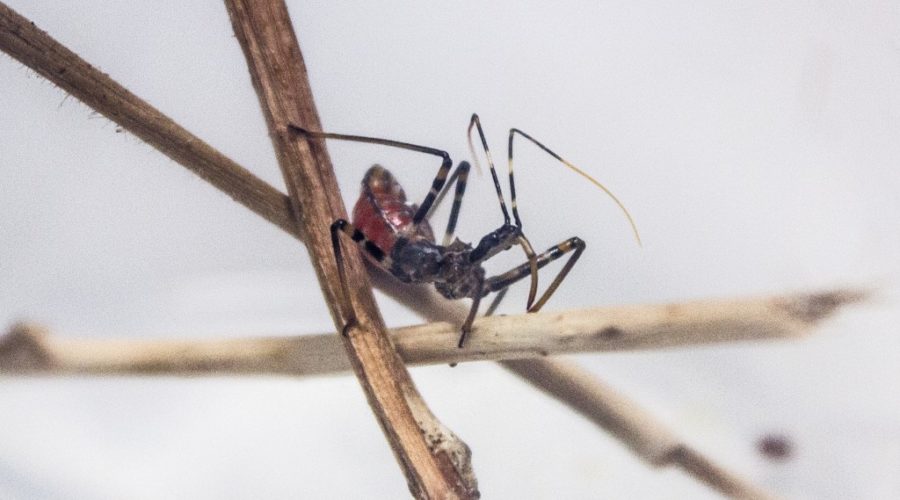Feature Creature: Assassin Bugs
The Assassin Bug really lives up to its name, as it is bloodthirsty as soon as it is born. When it hatches, the first thing this vampire-like-bug will do is hunt its prey, which varies on where the egg hatched. A baby blood sucker, also known as a nymph, injects their prey with their needle like beak, and feasts on blood so it can grow. Saliva is used as an anesthetic so the victim cannot sense any pain from the spot the blood is being sucked out of. While adult bugs inject their victim with a poison that turns the prey’s insides into liquid, making it easy to slurp up what’s left of an insect. This silent way of attacking another creature is another reason it is considered an ambush bug and their diet is a big reason why it’s a solution to garden pests.
Insects can range very widely in their physical traits, but the one thing all Assassination bugs have in common is that they are incredibly violent and sometimes stab its victim repeatedly with their strong beak. Beaks are hidden away under their head when its not in use and can inflict painful bites on animals and other insects. Using plants as their hunting grounds, these bugs that are also known as Kissing bugs, ambush their prey and corner them in various locations such as shrubs or garden plants to use as cover. Once prey is caught, they are pinned down by a Kissing Bug’s legs and their bodily fluids are sucked out.
This deadly creature can be found in almost any continent in the world, although specific types are home to certain locations. For example, The Wheel Bug, which is one of the many types of Assassin Bugs, is what is mainly found in the United States. While they can bite humans as well their venom and bite are not lethal, however, their bite is still as painful as a bee sting. Be sure to watch out for the famous orange and black colors of an Assassin Bug!







